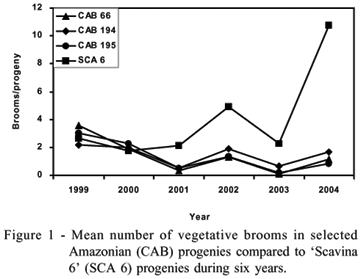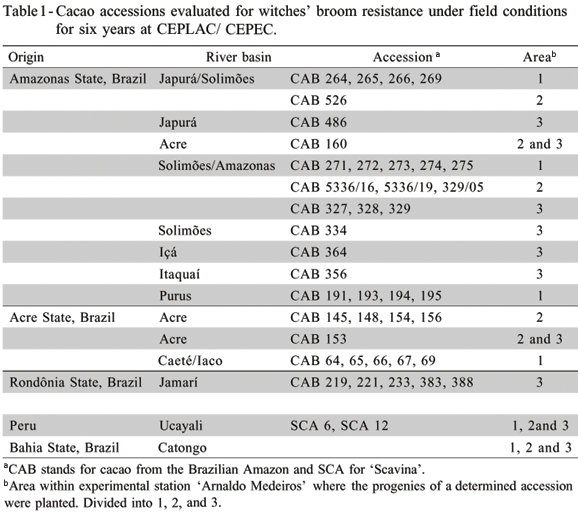The witches' broom disease caused by the fungus Crinipellis perniciosa is the main phytossanitary constraint for cacao production in Brazil. The integrated management of the disease involves resistance as one of the components. The breeding program conducted by the Brazilian Institution, CEPLAC is directed toward the pyramidation of resistance genes from different sources to achieve a more durable resistance. This study aimed to identify sources of resistance in progenies of cacao accessions collected in the basins of ten Amazonian rivers and compared to progenies from the Peruvian clones 'Scavina 6' and 'Sacavina 12'. Progenies from 40 Amazonian accessions and 'Scavina' were evaluated in the field for six years for witches' broom resistance through multivariate and repeated measurement analyses evaluating the effect of progeny, area, block, year, and their interactions. There were differences in the mean number of vegetative brooms on some Amazonian progenies and 'Scavina' descendants. There was an increase in the number of vegetative brooms in the last year for 'Scavina' progenies, but that was not observed for the Amazonian progenies 64, 66, 156, 194, 195, 269 and 274. There were different gene/alleles for resistance in the Amazonian progenies in comparison to the traditional 'Scavina' accessions. These new sources of resistance will be important for pyramiding resistance genes and consequently increasing the stability and durability of the resistance to witches' broom.
Theobroma cacao; genetic breeding; resistance; witches' broom disease




